AGRI PROBE
SnailsNew protein source
Does your dog speak Afrikaans?




Greta Thunberg, a 16-year-old activist from Poland, made history with a very powerful speech she delivered about climate change at the 4th Conference of the Parties to the United Nations Framework Convention on Climate Change (COP24). Earlier this year she was also nominated for the Nobel Peace Prize for her extensive awareness campaign on climate change.
In her speech she said, “I’ve learned you are never too small to make a difference … imagine what we could all do together if we really wanted to.”
With June being Youth Month in South Africa it is only fitting to make reference to this young and vibrant girl whose inspirational work got the world’s attention. This issue of Agriprobe celebrates the various endeavours by the department to facilitate opportunities for youth. We also look at how sustainability and technology can help play a role in
 by Mary James
by Mary James
reducing our carbon footprint and improving food productivity.
Initiatives such as the Burgundy Exchange Programme aim to empower young people through the transfer of knowledge and experience, which is necessary for an actively involved youth in the agricultural sector.
The rabies campaign, run annually by the department, helps to improve animal health and creates a safer and healthier environment. The activities around this campaign are specifically focused on children, sharing a wealth of information with them in the three official languages of the province.
We have to ultimately build a sound and productive agricultural sector for the next generation to inherit, and therefore have to make decisions today with the future in mind. Let’s make sustainable choices, better together.
EDITOR
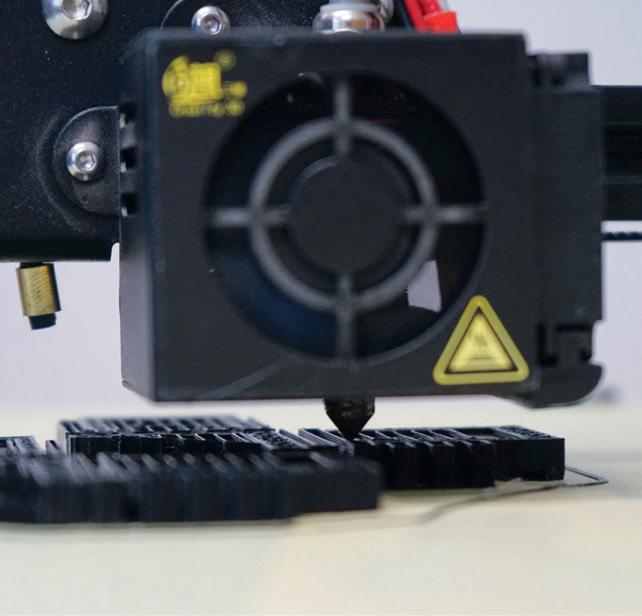
Mary James (021 808 5008) maryj@elsenburg.com
CHAIRPERSON
Dr Ilse Trautmann (021 808 5012) ilset@elsenburg.com
SECRETARIAT
Gizelle van Wyk (021 808 5022) gizellevw@elsenburg.com
EDITORIAL COMMITTEE
Ashia Petersen ashiap@elsenburg.com
Douglas Chitepo (021 808 5100) douglasc@elsenburg.com

Riaan Nowers (021 808 5194) riaann@elsenburg.com

Maritjie Cornelissen (021 808 5497) maritjiec@elsenburg.com

Brighton Shumba (021 808 5384) brightons@elsenburg.com

Pavarni Jorgensen (021 808 5227) pavarnij@elsenburg.com
Juanita Isaacs (021 808 7702) juanitai@elsenburg.com
John Constable (021 808 7763) johnconstable@elsenburg.com
Arie van Ravenswaay (021 808 5085) arievr@elsenburg.com
Bianca Capazorio (021 483 4700) bianca.capazorio@westerncape.gov.za
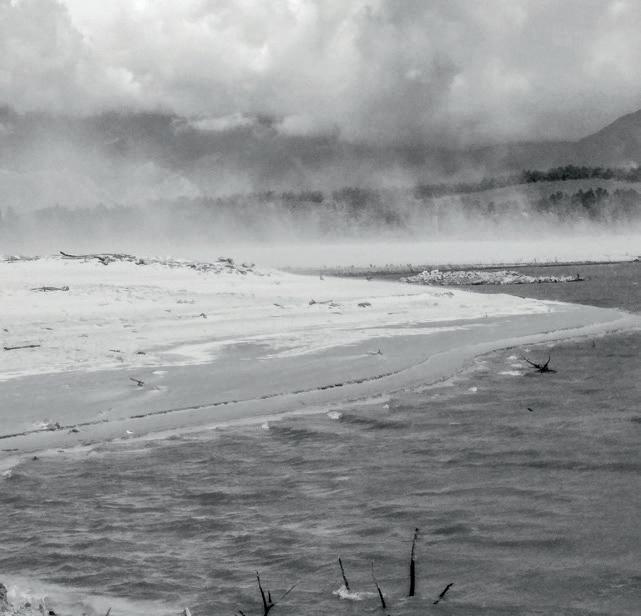

 by Bianca Capazorio, Bianca.Capazorio@westerncape.gov.za
by Bianca Capazorio, Bianca.Capazorio@westerncape.gov.za
Minister Beverley Schäfer gave her maiden budget speech as Minister of Agriculture in March, using an apple to symbolise the fruits of the agricultural sector’s combined labour.
This year, the Department of Agriculture has been allocated a budget of R911,131 million, which will be spent as follows:
1 Programme
ADMINISTRATION will receive R132,754 million
3 Programme
FARMER SUPPORT AND DEVELOPMENT will receive the bulk of the budget, namely R315,655 million
2 Programme
SUSTAINABLE RESOURCE MANAGEMENT will receive R84,753 million
4 Programme
VETERINARY SERVICES will receive R106,381 million
5 Programme
RESEARCH AND TECHNOLOGY will receive R140,710 million
7 Programme
STRUCTURED EDUCATION AND TRAINING will receive R67,336 million
6 Programme
AGRICULTURAL ECONOMIC SERVICES will receive R36,007 million
8 Programme
RURAL DEVELOPMENT will receive R27,535 million
Over the next year, the spending focus will be on developing smallholder and black farmers, skills development, creating opportunities for young people and working to harness the potential presented by the Fourth Industrial Revolution for positive change in agriculture.
Each of the Department of Agriculture’s programmes and partners have played an important role in developing the agricultural sector in the province.
As a result, agriculture now helps to create over 300 000 direct and indirect jobs in the province, and has played an important role in developing the province’s economy.

Despite the drought, the sector showed resilience and in 2018/19 exports still increased by 1,4%. This sector is critical to the Western Cape economy and in the decade between 2007 and 2017, agricultural exports increased from R20,9 billion to more than R63,8 billion in 2017. This represents an annual growth rate of 11,8%.
The agricultural sector produced 51% of all exported goods from the Western Cape and 45% of South Africa’s total agricultural exports come from this province.
The Farmer Support and Development (FSD) programme has received the biggest bite of the funding apple this year to focus on providing support, funding and extension services to black farmers in the province.
According to the medium-term expenditure framework (MTEF), the department has allocated over R1 billion towards successful land reform and related activities.
Minister Schäfer said, “We are proud to say that the fruit of our labour in this sector is evident in the results of a new independent study released in February, which showed that 72% of the land reform projects supported by our department are successful. This is 10 percentage points higher than five years ago, and higher than our targeted 70%.”
Minister Schäfer said the department provided a comprehensive package of support to farmers including training in financial and business management, and mentorship and market access provided by partners in the 11 commodity organisations.
The Department of Agriculture’s veterinary services have had to deal with several outbreaks over the years. However, the small team continues to do excellent work, which plays a vital role in allowing the province access to export markets.
Since the budget speech, the province has received the tremendous news that the European Union has lifted the ban on the import of ostrich meat from South Africa, which is an important economic sector in the Western Cape.
Climate change has an impact on the spread of agricultural diseases and pests. Given the extreme risks posed by climate change, the Research and Technology Development Programme at the department will continue to focus on conservation agriculture, expanding their work on small grains, potatoes and planted pastures in the new financial year.
The Western Cape already has the highest uptake of conservation agriculture in the country, with about 70% of grain farmers practicing reduced tillage.

A new report by GreenCape has also found that farmers in the province have invested R1 billion in undercover farming infrastructure like shade netting and tunnels, and have spent R350 million on no-till planting machinery.
Minister Schäfer also encouraged farmers to invest in their own resilience, as the water and electricity shortages have both had a major impact on the local economy. She encouraged farmers to investigate alternative power systems such as solar photovoltaic power.
She also highlighted the excellent work being done by young farmers in the province.
“We need to ensure that youth are taking advantage of opportunities in the agricultural sector in order to tackle youth unemployment and to introduce new blood in this sector,” she said.
The full text of the budget speech can be found on the Elsenburg website at: http://www.elsenburg.com/sites/ default/files/attachments/2019-03-28/ Agri%20final%20%28002%29.pdf
 by Dr Ilse Trautmann, ilset@elsenburg.com; Bongiswa Matoti, bongiswam@elsenburg.com; and Maritjie Cornelissen, maritjiec@elsenburg.com
by Dr Ilse Trautmann, ilset@elsenburg.com; Bongiswa Matoti, bongiswam@elsenburg.com; and Maritjie Cornelissen, maritjiec@elsenburg.com
The Western Cape Department of Agriculture believes in using existing platforms in the agricultural sector not only to support companies (old and new) and products, but also to showcase its own creativity in partnership models. At the South African Cheese Festival 2019 – held from 26 to 28 April, and attracting 30 000 visitors – the department once again hosted the Cape Made Pavilion (now in its fifth year of existence), the Cape Made Kitchen (four years old) and showcased the Small Cheesemakers project.
The Cape Made: Taste the Alternatives Pavilion has been used since 2015 to promote products of Western Cape origin, and allow producers to do direct marketing and promote the development of new products. The platform also assists producers to interact with other role players within their different industries.
Berries, cherries, nuts, pomegranates, olives and honey bush, to name but a few, were already catered for at the annual SA Cheese Festival. The department tabled a






proposal to Agri-Expo to house the pavilion for alternative crops in 2014. The pavilion was inaugurated in April 2015 and various agribusinesses including producers of honey and related products, homemade jams and spinach bread among others, exhibited their products at the pavilion under the theme “Innovation”.
Four years later, the number of agribusinesses participating in the Cape Made Pavilion has increased by 45%, from 33 in 2015 to 49 in 2019. The three days of the exhibition were without a doubt a time to remember for the participating agribusinesses. “The platform gives me the opportunity to showcase my products, explain its merits and more importantly for customers to taste the product,” said one of the business owners. The opportunity for direct interaction between the consumers and exhibitors offered by this platform is also crucial, especially in the wake of food safety and quality considerations. “The platform is great for marketing and getting to know what the consumers’ needs, thoughts and tastes are for my products” commented another exhibitor.
For increased market access and growth within the alternative crops industries, market development and other promotional events such as the Cape Made: Taste the Alternatives Pavilion is key. “The platform gives many entrepreneurs the opportunity to exhibit amazing products especially in these hard economic times. It is also empowering for businesses to be supported and given this exposure, and definitely a great return on any investment; it has also helped us with brand positioning and product development,” said another optimistic exhibitor.
This year’s exhibition also saw the introduction of very interesting products. For instance, who would have thought that one could taste bug ice cream? Yes, innovation and consumer-conscious behaviour of some of the agri-processing companies have led
to the production of ice cream from insects’ milk known as EntoMilk.
Also worth noting is the fact that some companies that started with fewer products have managed to add more value by coming up with a variety of other different products. For instance, Herbal View Culinary, previously Herbal View Hydroponics, started attending the exhibition with green herbs packed in smaller plastic packaging. The 2019 exhibition has seen the company evolving its packaging to bottled dried spices.
The department has to ensure that even as this value-adding is done, food safety is taken into consideration so that the final consumers are presented with safe food.
Have you ever enjoyed a perfect berry, a shining red cherry, the aroma of a guava, an olive in a fresh salad, a cup of rooibos or honey bush tea on your stoep, nuts at a cocktail event, or a pomegranate cut in half with its red jewels inside? These are some of the examples of alternative crops “heroed” in the Cape Made Kitchen 2019 recipe book that was specially developed by young chefs of The Private Hotel School in Stellenbosch to showcase these crops and related products in easy, “let us do it at home” recipes.
Alternative, smaller crops have high market value and open up the opportunities for job creation and economic growth due to its labour-intensive nature and its much sought-after position in the market place. Some of these crops also fill an important space in the agricultural sector with the increasing challenges of climate change. But for the consumer and city dweller, these crops might not be familiar and would not land in the shopping basket unless the use of it in the kitchen is better understood! So recipes like “Black cherry, biltong and blue cheese tart”, “Persimmon cheesecake with




walnut crust” and “Layered prune cake” were tantalising the taste buds of the keen attendees of the kitchen.
This year the Cape Made Kitchen was not only held in partnership with Agri-Expo and The Private Hotel School; Hortgro, the Milk Producers’ Organisation (MPO) and GrainSA joined forces to bring new energy and excitement to the kitchen in a true marriage of alternative crops, cheese, dairy products and bread. Three cooking demonstrations were held daily and festivalgoers had the opportunity to taste every recipe demonstrated and went home with a glossy recipe booklet. The booklet is also available on our website at www.elsenburg.com under Resource Library.
“The Western Cape Department of Agriculture is proud to support these boutique cheesemakers as they form an integral
part of the agricultural value chain,” says Joyene Isaacs, Head of the WCDoA. “Although consumers are increasingly enjoying artisanal cheeses, small cheesemakers are facing tremendous challenges on their journey to economic sustainability. The opportunity that the SA Cheese Festival creates in relation to market access is indeed commendable.”
The following small cheesemaking businesses presented their products at this festive event:

• Kasselshoop (Stilbaai)
• Bettie Bok (Lambertsbaai)
• Puglia (Cape Town)
• Rockvale Foxenburg Estate (Wellington)
• Forest Hill (Klapmuts)
• Cheesery (Bronkhorstspruit)
• Vredesberg (Kareedouw)
• La Petit France (Howick)
• TlaquePaque (Klein-Brakrivier)
• Karoo Goat’s Milk (Loxton)
The event not only provides the opportunity for the small cheesemakers to promote their products, but also plays an important role in the small cheesemaker’s market research, product development and building relationships-with buyers. “The Cheese Festival opened retail doors for us, allowing us to increase our production from 500 kg to 10 tonnes per month,” says Liesel Kasselman from Kasselshoop. “Our personnel also grew from seven to 20 members.”
According to Jan van der Merwe of Vredesberg Cheese the participation created invaluable market opportunities for a new small business like his. “The SA Cheese Festival gives us as small cheesemakers the platform to compete on a commercial level and to become part of the economy. We could already double our herd of goats with the new demand for products. We are also busy negotiating with a big retail chain to stock our products on their shelves.”
AP
The editorial committee of AgriProbe called in the expertise of the Western Cape Agricultural Writers’ Association, under the chairpersonship of Eunice Joubert, to peruse four editions of AgriProbe (2017/2018). The instruction was clear: please comment on its new style, content and general look and feel, but also assist the editorial committee to select the best article.
The committee was delighted with comments like “I was generally impressed with the new way in which the articles are presented. The articles are generally easy to understand, short and sweet and less
formal than in the past”. Another evaluator commented: “… lekker leesstof en stof tot nadenke”. And then we were humbled by the following comment: “Noudat ’n mens die vier publikasies gelees en weer gelees het, kom jy diep onder die indruk van die uitstekende werk wat uitstekende personeel van die Wes-Kaapse Departement van Landbou deurentyd doen. Van dié inligting hoort in die groot media-kollig tuis”.
But there can be only one winner and it was André Roux, with his article “Murraysburg ‘leiwater’ system refurbished”. Second prize went to Arie van Ravenswaay for his drone article. AP


The Western Cape Department of Agriculture’s Agricultural Trilingual Dictionary has recently been completely reworked and updated. It includes all three official languages of the Western Cape – Afrikaans, English and isiXhosa – and is available to all people in the agricultural sector.

As part of the department’s continuous exploration and drive towards innovation and to reflect its understanding of its clients, a group of dedicated officials (with knowledge of all three languages) came together a few years ago to design a technical agricultural dictionary. Since then, it has been widely used by students and others in the agricultural sector to translate agricultural terms.
According to the Head of Department, Ms Joyene Isaacs, the dictionary reflects the dedication of staff at the Western Cape Department of Agriculture, their understanding of the role of language in communication and their understanding of agriculture as a science.
Visit www.elsenburg.com/ resource-library/agriculturaltrilingual-dictionary to download a copy or
send an email to info@elsenburg.com
Die Wes-Kaapse Departement van Landbou se Drietalige Woordeboek vir Landbou is onlangs volledig herverwerk en opgedateer. Dit sluit al drie amptelike tale van die Wes-Kaap in, nl. Afrikaans, Engels en isiXhosa, en is beskikbaar aan almal in die landbousektor.
As deel van die departement se voortdurende verkenning en innovasie, en om sy kennis van sy kliënte te reflekteer, het ’n groep toegewyde amptenare (met kennis van al drie tale) ’n paar jaar gelede bymekaargekom om ’n tegniese landbouwoordeboek saam te stel. Sedertdien word dit wyd deur studente en ander rolspelers in die landbousektor gebruik om landbouterme te vertaal.
Volgens die hoof van die departement, Me Joyene Isaacs, is die woordeboek ’n toonbeeld van die toegewydheid van personeel by die departement, hul begrip van die rol van taal in kommunikasie en hul begrip van landbou as ’n wetenskap.
“Al drie amptelike tale van die Wes-Kaap moet gekoester, gedeel en gebruik word in kommunikasie in die landbousektor, sodat almal kan deel in die geleenthede en inligting wat vandag en môre beskikbaar is,” sê sy.
Besoek
www.elsenburg.com/
resource-library/agriculturaltrilingual-dictionary om ’n gratis kopie af te laai of stuur ’n e-pos aan info@elsenburg.com om ’n GRATIS harde kopie te bekom.
iSebe leZolimo eNtshona Koloni lisandul’ukuvelisa isiChazi-magama seZolimo esihlaziyiweyo nesingeeLwimi ezintathu, nesikumgangatho ophakamileyo. Siziquka zontathu iilwimi ezisemthethweni kweli leNtshona Koloni – isiAfrikaans, isiXhosa nesiBhulu siyafumaneka kumntu wonke okwicandelo leemveliso zezolimo.
Njengokuba kuyinxalenye yeli Sebe ukuqubekela phambili ngokwenza izinto ezintsha nekuthi libonise abantu elisebenziselana nabo ukuba liyaziqonda iintselo zabo, kwiminyaka em’balwa edlulileyo, kudibene iqela lamagosa (azazi zontathu ezi lwimi) azinikeleyo emsebenzini walo ukuze ayile isichazi-magama esitsha esingobugcisa kwezolimo. Ukususela ngoko, sele isetyenziswe liqela labafundi kunye nabanye kwicandelo leemveliso zezolimo ukuze bakwazi ukuguqula amagama asetyenziswa kwezolimo.
NgokweNtloko yeli Sebe, uNks. Joyene Isaacs, uthi esi sichazimagaga sibonakalisa ukuzinikela kwabasebenzi kwiSebe
lezoLimo eNtshona Koloni, ukuqonda kwabo ngokubaluleka
umsebenzi wolwimi kuqhakamshelwano kwakunye nolwazi lwabo lwezolimo njengesifundo zobunzulu-lwazi.
“Kufuneka zinakekelwe zontathu iilwimi ezisemthethweni eNtshona Koloni, kobelwanew ngazo ze zisetyenziswe
kuqhakamshelwano kwicandelo leemveliso zezolimo, ukuze wonke umntu axhamle kumathuba nakulwazi olukhoyo namhlanje nangomso”
Ukuze uzifumanele
esi sichazi-magama, ngena ku www.elsenburg.com/ resource-library/agriculturaltrilingual-dictionary okanye nge email info@elsenburg.com
xa ufuna ukuzicelela esele yenziwe “Mahala”.

During the 2019 South African Cheese Festival held recently, it was “cooking” in the Cape Made Kitchen (see full article in this edition of AgriProbe). The new Cape Made Recipe Book 2019 was launched with mouth-watering recipes meticulously developed by the young chefs of The Private Hotel School. The purpose? To showcase the use of alternative crops in the kitchen. Herewith the first recipe!






The department recently appointed a new Head of Communication (HoC) to lead its Communication subprogramme. Mary James is a bundle of energy with a true passion for communication initiatives, agriculture and changing people’s lives for the better. In her capacity as HoC, she is also the new editor of AgriProbe AgriProbe welcomes her and looks forward to the new ideas and creativity she will undoubtedly bring to the magazine.
MJ: After matriculating from Kathu High School in the Northern Cape, I decided to pursue a degree in communication at the Mahatma Ghandi University, India. I started my professional career as an English school teacher and later took on the role of lecturer at a further education and training (FET) college in Potchefstroom. In 2008 I had the opportunity to work for the Agricultural Research Council (ARC) Grain Crops division in Potchefstroom as their public relations officer. I managed their public relations and also undertook the role of communications lead for two major projects funded by the Bill and Melinda Gates Foundation.
It was during this period that I had the opportunity to work directly with small-
holder farmers and network with public and private project partners, both locally and internationally. This was a life-changing experience for me as I got to see first-hand the impact that needs-driven research can have on the community and the continent at large.
I obtained my master’s degree in public relations through the University of Southern Queensland, Australia and hope to study further in the future.
MJ: As Head of Communication, my job is to establish and maintain positive relationships between the department and its key internal and external stakeholders. This we do through various activities and publications custom-designed for the recipient, shared through the most relevant platforms such as events, publications and social media campaigns. It’s an impossible task to undertake on my own, but luckily I have a sterling team of seasoned communicators in their own right, with three shared interests among us – agriculture, communication and helping people.
MJ: Having worked at the ARC for eleven years, I found a great connection with the agricultural sector and I’ve always believed in doing something that contributes to other people’s lives. Where better to do this than in the field of agriculture, where you can help to ensure food security and improve livelihoods.
AP: What is your impression of the WCDoA thus far?
MJ: I found it to be very productive with a very passionate and diverse management and staff. The immaculate office space and campus is a testimony to the pride the employees take in their workplace.
AP: What is your vision for the Communication sub-programme? What would you like to achieve?
MJ: Uniform messaging and branding consistent with the concept of “Better Together”. Ultimately, it is about helping farmers and ensuring food security. With climate change and drought having
a huge impact on the productivity of farmers, it is important for the department to communicate the best ways to farm efficiently and resourcefully. Communication has the responsibility to channel this information in a format that is easily accessible by all. Agriculture needs to be revived as a preferred career choice through continued interaction with youth to ensure that they participate in agricultural dialogue and decisionmaking.
AP: What do you like doing in your spare time?
MJ: I enjoy going to the gym, travelling, painting and photography.
AP: What makes you happy?
MJ: The simple things in life – a bite of a really delicious pastry, the smell of the first rain, reading a book to my son before bedtime.
AP: What are you currently reading?
MJ: “Becoming” by Michelle Obama.
AP: If you were to write an autobiography, what would the title be?
MJ: I enjoy writing and am actually busy writing an autobiography at the moment, but I’m not ready to share the title just yet…
AP: If you could master a new skill in an hour, what would it be?
MJ: The skill of negotiation.
AP: What are your favourite quotes?
MJ: “Unless someone like you cares a whole awful lot, nothing is going to get better. It’s not.” (From The Lorax, by Dr Seuss) “Be yourself; everyone else is already taken.” (Oscar Wilde) AP

Prof. Schalk Cloete, pasafgetrede spesialiswetenskaplike verbonde aan die Direktoraat Veekundige Wetenskappe, is genomineer om by die kongres van die Association for the Advancement of Animal Breeding and Genetics (AAABG) wat in Oktober 2019 in Australië gehou word, verkies te word tot ’n genoot van die vereniging. Hierdie genootskap ( fellowship ) word toegeken aan “persons who have rendered eminent service to animal breeding in Australia and/or New Zealand or elsewhere in the world”. Dit sal hom in dieselfde geselskap plaas as internasionaal-erkende telingsnavorsers soos Dr. Helen Turner, Dr. Arthur Gilmour en Emeritus Professor James Stuart Barker – voorwaar ’n groot eer en prestasie!

Prof. Cloete het einde Maart 2019 afgetree, maar hy sal sy loopbaan by die Universiteit Stellenbosch (US) as Buitengewone Professor voortsit. Sy akademiese loopbaan het in 1978 aan die US begin met die verwerwing van sy BScAgric-graad. Hy verwerf sy honneursgraad in 1979 en sy MScAgric-graad met lof in 1986 aan dieselfde universiteit. In 2002 verwerf hy sy PhD aan die Universiteit van die Vrystaat. Hy is reeds in 1990 tot spesialiswetenskaplike bevorder by die departement,
waar hy groot bydraes tot veral volstruisen skaapteeltnavorsing gemaak het. Hy het in sy loopbaan by die departement, en as professor by die Universiteit Stellenbosch, onder meer vir 39 studente as studieleier opgetree, waarvan 22 MSc-grade en 17 PhD-grade suksesvol verwerf het. Verskeie van sy studente is steeds aktief betrokke by landbounavorsing. Sy ongelooflike bydrae tot die wetenskap word verder weerspieël in die meer as 400 wetenskaplike en semiwetenskaplike artikels wat onder sy leiding verskyn het.
Prof. Cloete het verskeie toekennings in sy loopbaan as navorser ontvang, o.a. die “Landboukundige van die Jaar”-toekenning in 1994 vanaf die Landbouskrywersvereniging van Suid-Afrika. In 2006 ontvang hy die Presidentstoekenning van die Veekundige Vereniging van Suid-Afrika “for the exceptional contribution delivered to animal science and the livestock industry”. In 2014 word Prof. Cloete genomineer vir een van die Nasionale Wetenskap en Tegnologie Forum se gesogste toekennings in die kategorie “Outstanding contribution to Science, Engineering and Technology and Innovation as a Researcher for Research Capacity Development over the past five to ten years”. Voorwaar ’n loopbaan om op trots te wees!
Een van sy vorige studente, Dr. Maud Bonato (US navorser gestasioneer by die Oudtshoorn Navorsingsplaas), skryf: “Professor Cloete is more than just a professor. He is a teacher, a mentor, and an inspiration. His pure enthusiasm and vast knowledge have been the essence of countless conversations, thoughtful debates and brainstorming sessions that have greatly contributed to my training as a junior researcher. He is a very dynamic academic mind, striving to achieve what other scientists would think is unachievable.”
Isak Owies (plaasvoorman, Langgewens Navorsingsplaas) skryf: “Ek wil Prof. bedank vir die voorreg wat ek vanaf 1994 tot 2014 gehad het om saam met Prof. die pad te kon stap. In die 20 jaar wat ek saam met u gewerk het, het ek geweldig baie geleer. Die verantwoordelikhede wat ek mettertyd moes dra, het meegebring dat ek ook kon groei as mens wat vir my geweldig baie beteken, veral in my huidige pos as plaasvoorman.”
Dr. Oliver Zishiri (lektor by die KwaZulu-Natal Universiteit) skryf die volgende: “I would like to thank you from the bottom of my heart for the special role that you have played in my life, commencing in the year 2007 when you became my postgraduate supervisor. Thank you for being the best supervisor ever. Being my postgraduate supervisor opened up many opportunities for me.”
Dr. Denise Hough (dosent by Glasgow Universiteit, Skotland):
“Baie dankie vir al die ondersteuning wat Prof. vir my gegee het en dat Prof. van die begin af potensiaal in my gesien het. Prof. het geleenthede geskep waarvan ek destyds net kon droom, soos om na konferensies oorsee te kon gaan. Dit het my kennis en uitsig op die lewe ontsaglik verbreed.”
Dr. Lise Sandenbergh (Australië): “Elsenburg verloor ’n navorser met ongekende visie en passie vir navorsing. Jou toewyding tot navorsing en leierskapstyl, waar daar altyd die geleentheid was vir kompromie, verduidelikings en vrae, sal altyd ’n inspirasie bly. Jou gewilligheid om studente op te lei en te mentor het vele loopbane, insluitend myne, ’n groot hupstoot gegee, waarvoor ek innig dankbaar is.”
Dr. Charlie Cornwallis (navorsingskollega: Universiteit van Lund, Swede): “Thank you for all the great times and support over the years. It’s been extremely interesting and stimulating for me, but most of all a lot of fun!! It’s obvious and amazing how much of a major impact you have had on many different topics and many different people – what a fantastic achievement to retire leaving such a legacy.”
Tonny Muvhali (Ph.D. student): “No words can describe the contribution you have made in my life. You have offered me an opportunity to grow academically and pursue a career in science. Your ability to make things look easy, guidance, inspiration, and experience in science is incredible.”
Dr. Paulina Rybnik-Trzaskowska (navorsingsamewerker, Pole). “I learned a lot from you, because you are a great teacher, mentor and human. You open your heart and the door to many people. And what probably caught me the most, you approach everyone with the greatest respect and a lot of trust. I will be grateful for the rest of my life that you gave me the chance to visit South Africa, meet people living there, and make timeless friendships and work in a unique international team. I feel honoured that I met you.”
Die departement sal Schalk mis as toegewyde navorser met ’n ongelooflike passie vir jongmense en dít wat alles nog in die wetenskap ontsluit moet word. Ons wens hom alles wat mooi is toe met sy aftrede en die volgende fase in sy loopbaan, want klaar is hy nog lank nie klaar nie! AP
The Western Cape Department of Agriculture’s Rural Development Programme focuses on the creation of sustainable, equitable and vibrant rural communities. It coordinates the implementation of the National Comprehensive Rural Development Programme (CRDP) in prioritised rural areas of the Western Cape Province. The programme plays a pivotal role in institutionalising community organisational
structures in selected rural nodes. It aims to empower communities by identifying and implementing new community projects. In addition, the programme focuses on enhancing the image and the socioeconomic conditions of agri-workers and their family members, by facilitating training and development initiatives, in order to improve their quality of life.
MEET THE TEAM THAT IS TRANSFORMING RURAL COMMUNITIES AND CHANGING LIVES!
1. Juan de Lora / Acting Director: Rural Development Coordination

Elsenburg – Head Office
Tel: 021 808 5383 • Cell: 081 714 7099
Email: JuanDL@elsenburg.com
2. Gertrude Jacobs / Acting Director: Farm Worker Development
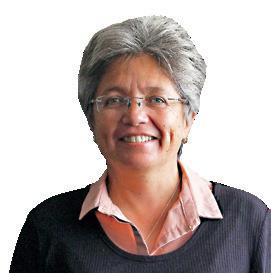
Elsenburg – Head Office
Tel: 021 808 5086 • Cell: 081 859 2965
Email: GertrudeJ@elsenburg.com
3. Rasheeq Williams / Deputy Director: Rural Development
West Coast and Cape Winelands Regions
Tel: 021 808 5410 • Cell: 073 275 2578
Email: RasheeqW@elsenburg.com
4. Brighton Shumba / Deputy Director: Rural Development
Central Karoo and Garden Route Regions
Tel: 021 808 5384 • Cell: 083 559 6499
Email: BrightonS@elsenburg.com
5. Melanie Tilling / Office Manager: Rural Development
Elsenburg – Head Office
Tel: 021 808 7720 • Cell: 082 907 3068
Email: MelanieT@elsenburg.com
6. Zyta Soomar / Community Development Officer: Farm Worker Development
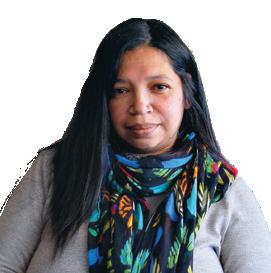
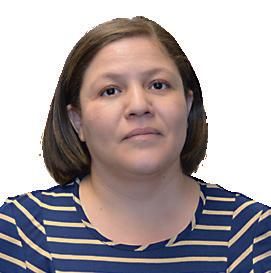
Cape Metro Region
Tel: 021 808 5322 • Cell: 076 982 7655
Email: ZytaS@elsenburg.com
7. Evon Mayekiso / Community Development Officer:
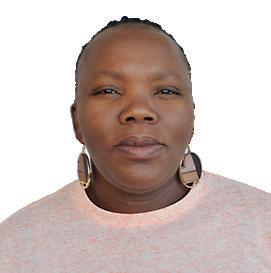


Farm Worker Development
Garden Route Region
Tel: 044 803 3700 • Cell: 074 613 5892
Email: EvonM@elensburg.com
8. Byron Jacobs / Community Development Officer: Farm Worker Development


Cape Winelands Region
Tel: 021 808 5421 • Cell: 078 096 2504
Email: ByronJ@elsenburg.com
9. Franco Williams / Community Development Officer: Farm Worker Development

Cape Winelands Region
Tel: 021 808 7656 • Cell: 081 505 7549
Email: FrancoW@elsenburg.com
10. Jacqueline Cupido / Community Development Officer: Farm Worker Development



Overberg Region
Tel: 028 424 4806 • Cell: 082 902 7326
Email: JackyC@elsenburg.com
11. Deona Strydom / Community Development Officer: Farm Worker Development Central Karoo Region

Tel: 023 414 2126 • Cell: 072 580 0950
Email: DeonaS@elsenburg.com
12. Jacqueline Carolissen / Community Development Officer: Farm Worker Development
West Coast Region
Tel: 027 201 3531 • Cell: 082 902 7318
Email: JacquelineCa@elsenburg.com
13. Meghan Cupido / Personal Assistant to Director: Farm Worker Development
Elsenburg – Head Office
Tel: 021 808 7601 • Cell: 082 906 5647
Email: MeghanC@elsenburg.com
14. Ando Dreyer / Administrative Support Officer: Rural Development
Elsenburg – Head Office
Tel: 021 808 5367
• Cell: 083 331 4364
Email: AndoD@elsenburg.com AP







 by John Constable, johnc@elsenburg.com
by John Constable, johnc@elsenburg.com
Youth development is the heartbeat of human capital development for the Department of Agriculture. The aim is to ensure that a pool of agricultural employees with critical and scarce skills is available for the department and the sector, but also to expose them to the career opportunities in agriculture.




The start of the new financial year commenced with the new intake of the Premier’s Advancement of Youth (PAY) project and graduate interns.
Thirty PAY interns who matriculated in 2018 are offered an opportunity to complete a 12-month internship with the Department of Agriculture. This internship started in 2012. The success of the programme soon made it one of the popular choices for matriculants.
The one-week orientation session conducted in Kuilsriver at the Western Cape Sport Centre was attended by 161 young people. The purpose was to prepare them for beginning duty at the department and with their respective host employers where they are placed. There were 131 graduate interns – mostly placed with external host employers and agricultural entities – attending the joint orientation session. A balanced orientation programme to accommodate both the graduate interns and matriculants for the week included presentations on the following:
• Land acquisition – the Department of Land Reform and Rural Development
• Departmental programmes
• Personal finance – ICAS
• Diversity
• Relationship enrichment and effective communication management
• Government Employees Medical Scheme (GEMS)
• Agri-processing
• The Occupational Health and Safety Act
• BCEA (Basic Conditions of Employment Act) and LRA (Labour Relations Act) – the Department of Labour
• The fourth industrial revolution (4IR) and agriculture overview
• Departmental and provincial structure –vision and mission
• Digital and social media awareness
The land acquisition presentation by the Department of Land and Rural Development turned out to be a heated debate with access to land being scrutinised. Dr Dirk Troskie from the department did a presentation on the fourth industrial revolution. The team from the Western Cape CoLab for e-Inclusion and Social Innovation (University of the Western Cape) concluded the session on the last day with their presentation on digital and social media awareness.
The uniqueness of the PAY project and graduate internships offered by the department is in the development plan drafted for each group for holistic development during the internship period.



includes training in bread baking and juice, yogurt, cheese and jam making. Interns who successfully complete the programme and have an interest in agriculture as a career are supported with bursaries for studies of their choice. Seventy per cent of interns go into further studies after their internship. Three former PAY interns are currently studying master’s degrees in agriculture funded by the department.

Each intern is assigned to a mentor who guides, monitors and evaluates the intern on a continued basis along with transferring skills. The internship is mostly practical and administrative duties are minimal. PAY interns rotate through the eight departmental programmes during the year. Part of their exit strategy is the rewriting of matric subjects: Mathematics, Physical Sciences and Life Sciences. Teachers are appointed to give revision lessons to prepare them for this. Monthly agri-processing training at the agri-hub at Elsenburg
The graduate internship follows a more professional development programme over two years. Training for the graduates ultimately focuses on developing agricultural entrepreneurs with the potential to become self-sustainable and small famers. The training includes a one-week leadership course offered by the University of Stellenbosch Business School (USB), entrepreneurial training by the National Youth Development Agency (NYDA), agriprocessing, Making Markets Matter (MMM Inc.) executive education and network building for the African agribusiness sector. This international conference prepares participants for agri-enterprises on the African continent. Project management is standard training for all graduates. A special competition based on the fourth industrial revolution will see the winner participating in drone training.
Once this successful cycle is completed the next intake begins. Eager host employers submit a needs analysis one year in advance to ensure that qualified graduates are placed in line with their qualifications with suitable host employers. Preference is given to graduates from agricultural colleges. AP

Two French exchange students, Jean Orsoni and Vincent Liéval, recently spent three weeks in the Western Cape as part of the Burgundy Exchange Programme. They said that their visit to South Africa introduced them to “amazing wine and an amazing country” and that they will definitely be returning in future. Both students spent two weeks at a host farm and one week at Elsenburg Agricultural Training Institute (EATI – part of the Western Cape Department of Agriculture [WCDoA]) as part of the Western Cape/Bourgogne-FrancheComté (BFC) Exchange Programme. During this time, they were exposed to various winemaking techniques and acquired new management skills. The visit was facilitated by the WCDoA. Jean and Vincent are winemaking students at CFPPA Training Institute
in Beaune, Burgundy and both feel the time spent in the Western Cape added greatly to their winemaking knowledge.


Jean (28) said he wanted to experience the difference between wine production in South Africa and France.
“In France the wine farms are much smaller and the farmer and winemaker is often the same person. In South Africa it is two different people, each with his/her own team, and the estates are very well equipped.” He was also impressed with the new generation winemakers he met. “They are very innovative and are using their skills and overseas experience to try new things.” He spent time at Jordan Wine Estate, after which he moved on to Elsenburg, where he experienced his first harvest.
Vincent (39) said the visit to South Africa helped to equip him to manage his family’s vineyard one day. He was first placed at KWV before moving to Elsenburg, where he experienced his first harvest.
In their spare time they also had the opportunity to do some sightseeing and visited popular tourist attractions such as Table Mountain, Bo-Kaap, Muizenberg, Kirstenbosch, and the Waterfront. They describe South Africans as very friendly and welcoming.

As part of the programme, cellar workers from the Western Cape will visit Bourgogne in France in September to learn more about viticulture and winemaking techniques.


Their visit introduced them to ‘amazing wine and an amazing country’.Vincent Liéval, Jean Orsoni (French students) and Brenton Maarman (WCDoA).

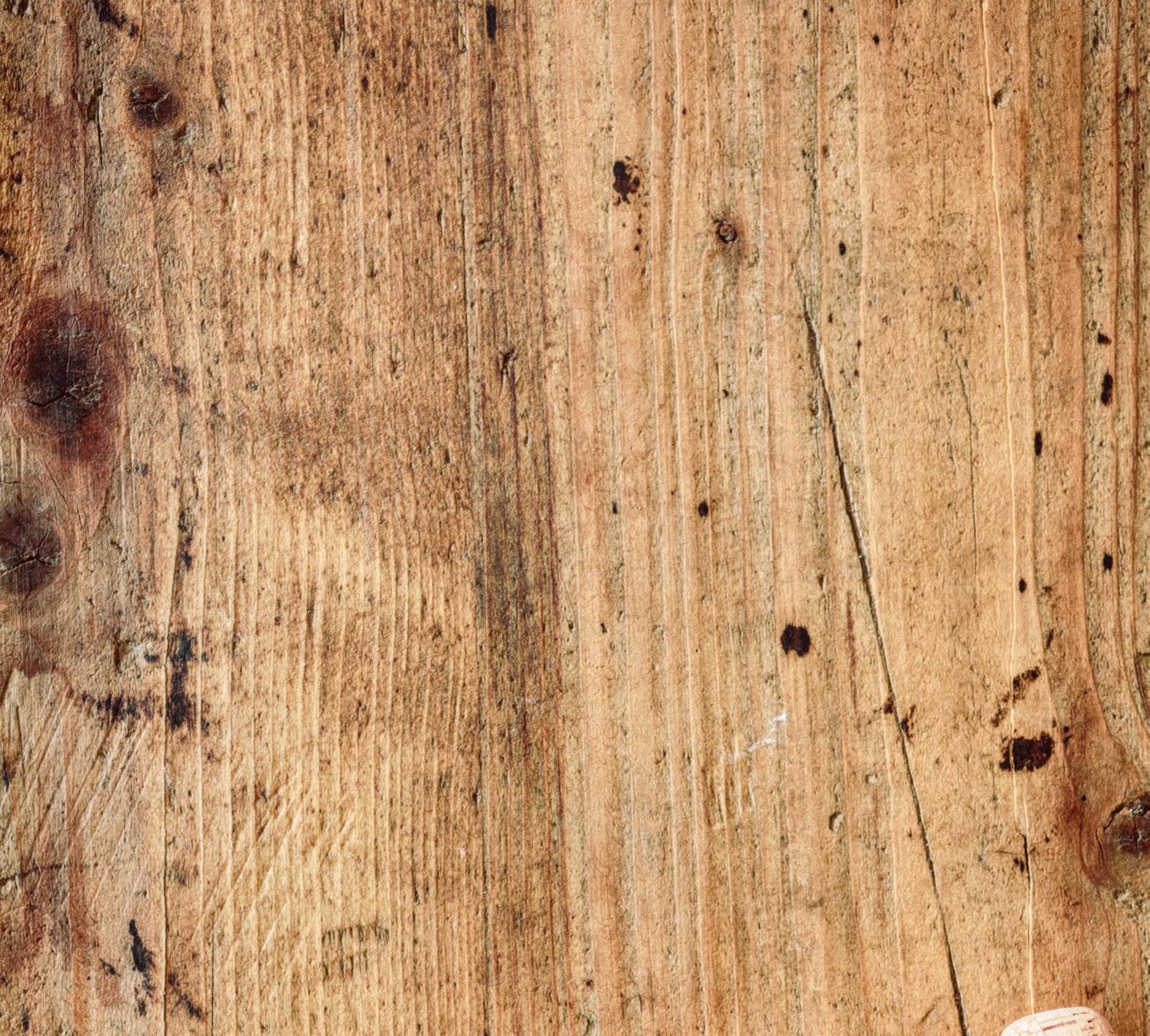

The Western Cape Government and the Regional Council BFC have shared prolific bilateral relations since the Thuthukile Skweyiya Burgundy Exchange agreement was concluded in 2000. Its main objective is to motivate young people to improve their social status through education and training, made possible through a common commitment by participants, professionals and politicians of these two regions.
The commitment was renewed in 2011 with the signing of a new five-year memorandum of understanding (MoU). However, this MoU expired in 2016, even though the projects have continued to be implemented without a formal framework. Historically, the agreement focused on the cooperation in the agricultural sector. However, in the 2011 MoU the areas of cooperation were expanded to include emerging areas such as sport, the environment, and economic development.
During 2016, the Region of Bourgogne merged with the FrancheComté region. It is now known as Bourgogne-Franche-Comté. This merger presents new opportunities for the renewal of the agreement between the two regions. In 2017, the Vice President for International Relations, Tourism and European Funds, Mr Patrick Ayache, visited the Western Cape to reaffirm bilateral relations between the two regions and to discuss the new twinning arrangement. The MoU was renewed in July 2018. AP
 by Dr Anel Engelbrecht, anele@elsenburg.com
by Dr Anel Engelbrecht, anele@elsenburg.com
One hundred and sixty selected ostrich breeder birds were sold at the 15th annual auction of the Western Cape Department of Agriculture held on 12 March 2019 at the department’s Oudtshoorn Research Farm. The average price was R5 500, which is significantly higher than last year, when the highest price paid for a breeder bird was R4 100. This comes in the midst of the prevailing drought in the area, and after the recent news that the ostrich industry will soon be able to export processed ostrich meat to the European Union again.

The ostriches sold are from the resource flock of the Oudtshoorn Research Farm, which has been selected for reproduction and weight since 1996. The department sells progeny from this flock to the ostrich industry annually to enable the industry to benefit directly from the genetic improvement that is made at the research farm through its selection programme.
The breeder birds were sold per catalogue with information of each bird’s age, weight and breeding values. A two-year-old female with a high breeding value for weight was sold for the highest price of R9 200. The highest price of R6 000 was paid for a male with a
negative breeding value for the occurrence of hair follicles on leather. Hair follicles are small holes that can be seen on the processed skins and is deemed undesirable as it is detrimental to leather quality. The holes are the follicles of fine hairs or filoplumes that occur on the ostrich skin.
Research done by Dr Anel Engelbrecht (scientist at the Oudtshoorn Research Farm) showed that the occurrence of the hairs are heritable and can therefore be selected against. This is the first auction where breeding values for the occurrence of hair follicles were given in addition to breeding values for reproduction (egg and chick production) and weight. Dr Schalk Cloete (specialist scientist at Elsenburg) did a multiple trait analysis that included data for the evaluation of hairs on live ostriches, as well as for hair follicles on skins in order to estimate breeding values for hair follicles.
The auction was well-attended, with 15 buyers registering to bid. Mr Jurie Klue of Klaarstroom bought the highest number of ostriches: 12 males and 44 females in total.
This year’s auction proves that ostrich producers are willing to invest in breeding material to improve effectivity and productivity. This signals hope for the future of the industry in the long term.

The agricultural sector is a key driver of South Africa’s economy given its forward and backward linkages to other sectors. However, after prolonged growth in South Africa’s agricultural economy, recent years have been synonymous with a volatile environment due to changing climatic conditions and macroeconomic variations.i This is particularly true for the Western Cape, which has been suffering from three successive years of drought, resulting in widespread job losses. Even though the agricultural sector only contributes to 4% of the regional economy, it employs around
10% of the entire labour force in the province. Furthermore, the value of agricultural and agri-processing exports comprises 52% of total exports from the Western Cape to the rest of the world.ii
Agriculture plays an important role in rural areas, contributing to the GDP and serving as a link to other sectors. The South African tourism sector has shown incredible job-creating potential and resilience in a challenging economic climate,

generating over 40 000 net new jobs in 2017.iii The sector is a catalyst in creating local employment and reviving small towns, with agritourism seen as a niche tourism product offered to local and international tourists.iv
Agritourism is not new, however, few studies have been done on agritourism in South Africa, despite a wealth of research done on wine tourism.v Agritourism gives local and international visitors a glimpse into the life of many inspirational rural South African farmers. This often includes an experience of some beautiful and wild natural places. This, in turn, creates opportunities to diversify income and to support an entire local economy on farms, and entrepreneurs in surrounding rural towns.
There is further opportunity to grow agritourism in South Africa through the development of route tourism, which is considered to be the best way to achieve sustainability in travel and tourism.vi Clustering tourism activities can expand agritourism markets and average length of stay, offering a wider variety of activities and distributing economic benefits across a larger geographical area. The collective marketing and linking of smaller tourism centres as one tourism destination is a
critical component of success and a means of pooling limited resources in a strained economic climate.
Since little is known about the potential application and success of applying route tourism to agritourism, the Western Cape Department of Agriculture and the World Wide Fund for Nature South Africa, collaborated on a study to contribute to South African route agritourism literature to enable greater adoption of agritourism.

The study was aimed at identifying factors that:
• motivate decisions to start an agritourism business as a diversification strategy;
• determine the success of route agritourism; and
• could assist in creating an enabling environment that encourages wider adoption of agritourism.
The research findings confirm that farmers acknowledge the benefits of agritourism. They are interested in diversifying their operations and increasing revenue by expanding their operations to include agritourism, but face numerous challenges. While respondents perceive route tourism as an opportunity to leverage agritourism, more research and awareness is required.
Contact the authors for the full report.
i BFAP. 2018. Baseline Agricultural Outlook 2018-2027. http://www.bfap.co.za/wp-content/uploads/2018/08/BFAPBaseline-2018.pdf
ii Pienaar, L. & Boonzaaier, J. 2018. Drought Policy Brief: Western Cape Agriculture, Elsenburg:s.n.
iii STATSSA. 2018. How important is tourism to the South African Economy? http://www.statssa.gov.za/?p=11030
iv Rogerson, C.M. 2014a. The Uneven Geography of Tourism in South Africa. African Journal of Hospitality, Tourism and Leisure, 3(1).
v Rogerson, C.M. & Rogerson, J.M. 2014b. Agritourism and local economic development in South Africa. Bulletin of Geography. Socio-economic series, 26(26).
vi Rogerson, C.M. 2007. Tourism Routes as Vehicles for Local Economic Development in South Africa: The Example of the Magaliesberg Meander. Urban Forum, 18(2):49-68.
The Global Alliance for Rabies Control is a non-profit organisation that collaborates with national and local governments, international partners and other NGOs. It aims to raise awareness and secure political commitment to end rabies deaths worldwide by the year 2030.
In collaboration with Netcare and the World Health Organization, a booklet aimed at children has been produced, called “Want a Friend? Be a Friend!” The booklet contains worksheets and activities for children, which teach about animal care, dog body language and how to prevent dog bites. It also contains information about what to
do if you are bitten by a dog and how to prevent rabies.
In 2017, when Western Cape Veterinary Services started using the booklets during school education days, it was available in two languages of the Western Cape: English and isiXhosa. After lobbying from several of the animal health technicians in the Veterinary Services team and the assistance of a few dedicated Elsenburg staff members and their professional contacts with translation, an Afrikaans version was produced, now making the booklet available in all three of the province’s official languages.
The response to the new Afrikaans booklet, entitled “Soek ’n Maat? Wees ’n Maat!” has
been very positive. In the second half of 2018, approximately 6 000 copies were printed and distributed to children by Veterinary Services officials at education events held at schools throughout the province. Primary schools


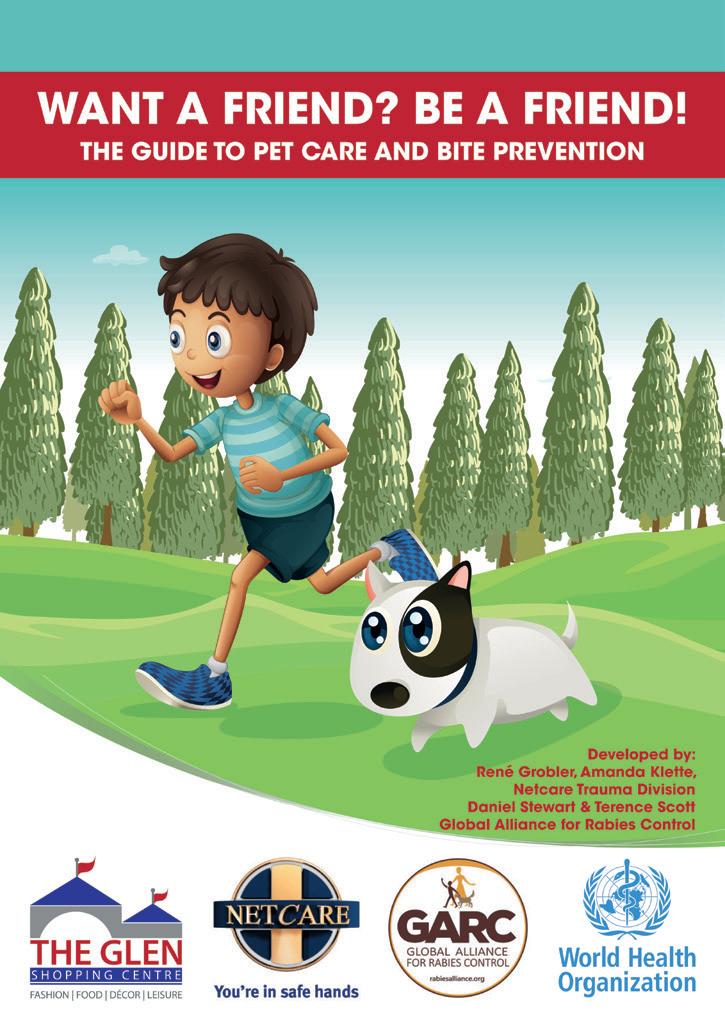
were mainly targeted, ranging from rural schools with 20 learners to urban schools with several thousand. Some of the animal health technicians shared their experiences using the new Afrikaans booklet:
“We have used this version at a number of primary schools in our area and I can confirm that it does work very well. We even had a colouring competition. We combine our rabies awareness talks with the pet husbandry side and also plan to use it with the LandCare camps where I usually also give a talk ...” – Albie Storm (Oudtshoorn)
“Ek het ’n hondsdolheidpraatjie en ‘Soek ’n maat? Wees ’n maat!’ -praatjie by ’n skool gehou en vir elkeen ‘n gelamineerde sertifikaat gegee ná die praatjie. Die kinders het dit baie geniet en was baie trots op hulself toe hulle die sertifikaat ontvang.” – Irmilind Speelman (Clanwilliam)
“This is a wonderful initiative and definitely a step in the right direction. So congratulations to everyone who participated in creating and distributing this booklet.” – Maresa Fourie (Stellenbosch)
“Ek gebruik dit by elke skoolpraatjie ... die kiddies love die aktiwiteite.” – Elouise Hattingh (Beaufort-West)
“I went to [a primary school] in Atlantis to do a rabies presentation. The school principal … explained that because it was Guy Fawkes that day, the children stayed at home (my audience was still 500 children). Before I started with my rabies presentation, I first told the children how they can help the pets with the noise of the Guy Fawkes crackers. Some of the information in the booklet like “doggie language”, “avoid loud noises” and “shelter and comfort” was useful regarding the expected crackers that evening.” – Marius Vrey (Malmesbury)
“The schools that I’ve visited and those where I did the presentation were very impressed that the booklet is available in the languages that they speak. Robertson is mostly Afrikaans. They feel that the children better understand the concept of the rabies education with all the pictures included.” – Mercia Williams (Robertson)

Three thousand copies of the booklet were already printed for use in the first quarter of 2019, with more in the pipeline for the remainder of the year.
Education resources such as these are extremely valuable to Veterinary Services to assist in preventing rabies in both animals
and humans, as well as promoting healthy relationships between people and animals. The “Want a Friend? Be a Friend!” booklets in all three of the aforementioned languages as well as many more are available on the Global Alliance for Rabies Control’s website at https://rabiesalliance.org/resources.

Intlangano engoLawulo loMgada wezinja kwiHlabathi ingum’butho ongasebenzeli inzuzo noneenjongo zokuphelisa ukufa kwezinja ngumgada ngomnyaka ka 2030 kwilizwe liphela. Ngokusebenzisana nabakwa Netcare kunye noM’butho wezeMpilo kwilizwe liphela, kubhalwe zekwashicilelwa incwadana yabantwana nebizwa ngokuba yi “Ufuna umngani? Yiba ngumngani!” le ncwadana inamacwecwe ekunokubhalwa kuwo kunye nemisetyenzana yabantwana engokubafundisa ngokuthintelwa komgadla kwimfuyo nakuluntu kwakunye nokukhuthaza ubudlelwane obuhle phakathi kwemfuyo nabantu.
Le ncwadana ibekho kwa ngomnyaka ka 2017 ngesiNgesi nangesiXhosa, kodwa ngoncedo lwabasebenzi abazinikeleyo base Elsenburg, kwakunye nezifundiswa abaqhakamshelana kunye nazo, iye yaguqulelwa nakwisiBhulu kumnyaka ka 2018, nto leyo ithetha ukuba ngoku le ncwadana iyafumaneka ngazo zontathu iilwimi ezisemthethweni kweli phondo.
Inguqulelo engesiBhulu ngale ncwadana nenesihloko esithi “Soek ‘n maat? Wees ‘n Maat!” iye yatsala umdla omkhulu kangangokuna sele kushicilelwe ama 6000 nesele zisetyenziswe kumabanga emfundo ephantsi kumnyaka ka 2018. Sele kushicilelwe amawaka amathathu eekopi zale ncwadana kuzo zontathu iilwimi ukuze zisetyenziswe kwikota yokuqala kunyaka ka 2019, yaye ezinye ziseza ebudeni bomnyaka.
Incwadana ethi “Ufuna umngani? Yiba ngumngani!” iyafumaneka ngazo zontathu iilwimi kwakunye nolunye uncedo oluninzi kule dilesi: https://rabiesalliance.org/ resources

Sentinel-2 is one of the satellites in the Copernicus programme of the European Space Agency (ESA). It has a multispectral sensor that records imagery data in various parts of the electromagnetic spectrum, which have particular relevance to agriculture and environmental applications. The ESA has made the data freely available to all.
Furthermore, through the development of the “Sentinel Hub”, the data as well as various processing tools are made available to Web developers to incorporate via the “cloud” into their own websites. As a result, the Western Cape Department of Agriculture (WCDoA) is customising data, tools and information layers into a new website. The aim is to

educate and assist producers and other interested parties to start using this kind of information via a simple web interface, for various aspects of agricultural and environmental decision-making.
This is one of the technology trends corresponding with the anticipated “fourth industrial revolution” –particularly in terms of the concept of “big data”. Farmers and other agricultural stakeholders today are faced with masses of data that can support their planning and decision making. The department sees this development as an opportunity to educate and empower stakeholders to exploit this free resource and the various analytical technologies available.
Although it is aimed at the more technologically minded producer or stakeholder, it is certainly accessible to anyone who is prepared to do a bit of reading and experimentation to make use thereof. No specialist knowledge is necessary since data is provided in a user-friendly format.
Many researchers and producers will be familiar with Landsat, the US “stalwart” of agricultural satellite information over the past few decades. Sentinel-2 has a higher resolution and a much quicker “revisit” time than that of Landsat. Whereas Landsat moves over the Western Cape every 16 days, Sentinel-2 comes over every five days, providing many more cloud-free images for potential analysis.
Some of the better-known applications for this type of imagery are as follows:
• Crop monitoring for early detection of any unexpected deviations from normal
conditions. (These can often show up in the multispectral wavebands before they are visible in the field.) Such information can help to focus field scouting to investigate possible causes for the anomaly.
• Veld condition monitoring and droughtassessment support.
• Assessment of the impact of natural disasters (fires, floods, drought).
• Burn scar mapping.
Currently much research is being done, resulting in manipulations of these multispectral wavebands in formulae known as indices. This allows us to monitor and examine many other phenomena as well. Consequently, part of the project is to investigate the new research and indices and to make the most relevant of these available for our local users. Often the best way to use these types of indices is to compare values to determine differences or anomalies; not to simply evaluate the current pixel values (usually represented as colour shadings) in isolation. This is done by comparison of values spatially across the field or camp to detect potential problem areas, or by determining how the camp or orchard compares with “normal” or previous season values for the same location. The portal allows the user to easily produce graphs showing the development of these indices during the current season as well as for the past three years for comparison purposes. The availability of some other information layers – such as base maps, field boundaries and farm cadastre – allows the users to orientate themselves and to select or even sketch in specific fields or regions for monitoring and analysis.
Whilst the project is still in its very early stages, a “beta” version of the development is available for interested users at: https://gis.elsenburg.com/apps/s2v/
 by Lu-Jeanne van Heerden, jeannevh@elsenburg.com
by Lu-Jeanne van Heerden, jeannevh@elsenburg.com
In South Africa, snail farming is still a very new farming venture. The purpose of this short article is to make South African farmers aware of the snail-farming market.





Snail farming is not a new concept. Since prehistoric times, man has been consuming snail meat because it is low in fat, high in protein and iron, and has almost all the amino acids necessary for the human body. Snails essentially originated from wildlife . They are considered good food and a good source of nutrition.
The calorific value of snail meat is 750 calories per kilogram of meat when ready for consumption, which is lower than the meat of various fish, birds, and mammals. The protein content is high and varies at around
15% of the net weight. Carbohydrates make up 2% and the percentage of fat is only 1% of the total net weight. The water content is high and ranges from 73% to 89%.
Certain types of snails are favoured for commercial farming because of their size and the quantity of meat they produce. Many species of snails that are good for farming are found in Europe, North and South America, Asia and Africa. Each area has different species that thrive in varied environments. All land snails are edible, and the slime is also used in producing cosmetics. (for example, Snail White Sun Screen SPF50+; Kenra Platinum Snail Anti-Aging Shampoo & Conditioner; any Celltone product.)
Some land snails and their country of origin:
Otala lacteal Europe
Cepaea nemoralis Europe

Helix aspersa


Europe, US, New Zealand, Southern Africa
Cepaea hortensis Europe
Eobania vermiculata Europe
Helix lucorum Europe
Helix aperta Europe and North Africa
Achatina achatina Africa
Snail farming can be practiced anywhere, as long as the temperature is carefully controlled and the criteria below are strictly adhered to: A mild climate of 15 °C to 25 °C with high humidity (75% to 95%) is best for snail farming.
Below 12 °C snails become inactive; below 10 °C, all growth stops; below 7 °C, snails hibernate. When the temperature rises above 27 °C or conditions become too dry, snails aestivate (a state of dormancy). Wind is bad for snails because it speeds up moisture loss, and snails must retain moisture.
Snails dig into soil and ingest it. Good soil enhances snail growth and provides some of their nutrition. Lack of access to good soil may cause fragile shells even when the snails have well-balanced feed. The snails’ growth may lag far behind the growth of other snails on good soil. Snails will often eat feed, and then eat soil. Sometimes, they will eat only one or the other.
Unfortunately, the climate in the Western Cape region varies from 3 °C in winter to 40 °C or more in summer. Here, farming with snails can only be done in a temperature-controlled shed. The soil also needs to be carefully prepared to have the following characteristics:
• It must contain neither a lot of sand nor too much clay.
• It must have 20% to 40% organic matter content. Organic matter enhances the
cation-exchange capacity (CEC) of calcium and magnesium, which in turn stimulates growth.
• A pH of around 7 is necessary.
• There must be adequate calcium, the primary constituent of shells (up to 98%). A common way to introduce calcium is to add ground limestone at a suggested concentration of 0,5 kilograms per square metre.
Enclosures for snails are usually long and thin instead of square. This allows the workers to walk around (without harming the snails) and reach into the whole pen. The enclosure may be a trough with sides made of wood, block, fibre cement sheets, or galvanised sheet steel. Cover it with screen or netting. Fences or walls are usually 60 cm high plus at least 13 cm into the ground. A cover will protect against heavy rain. Shade (which may be a fine mesh screen) on warm winter days helps keep the snails dormant. A mesh of 5 mm or finer is used for pen screens or fences. Pens containing baby snails need a finer mesh. A sprinkler system ensures moisture when needed.
The bottom of the enclosure needs to be more solid than screening. A snail placed in a wire-mesh-bottom pen will keep crawling, trying to get off the wires and onto solid, more comfortable ground.

Snails mate during early October and may mate a second time two weeks later. The snail stores the sperm in its body, and fertilises eggs when needed. The snail will lay eggs up to six times a year. Eggs take three weeks to hatch. Snails lay up to 200 eggs at a time. Baby snails are ready for the market at the age of eight months.




Leave the snails in a container with air holes for two days without food. That will detoxify the snails. After detoxifying the snails, you must wash them. Put the snails in cool, clean water with salt and vinegar. Wash them by hand by rubbing them.
The water will turn white. Repeat this until the water no longer turns white. Now boil the snails in water, also with salt and vinegar, for five minutes. Your snails are now ready to be cooked.

Snails feed on fruits, vegetables like cabbage, microscopic algae, and moist leaves like banana leaves or lettuce. Snails also drink water so farmers should provide a source of water that is easily reachable.
Snail farming is still a niche market is South Africa. They can be sold to restaurants, but strict hygiene must be adhered to. There are no hygiene regulations for snail farming in South Africa yet, because it is still a niche product here, and not an established commodity. General hygiene rules do apply. Records must be kept for the restaurants/pubs to trace where the produce came from. There shouldn’t be any pesticides or antibiotics in the snail meat when sold. AP
When 3D printing is discussed, the first thing most people think of will most likely be the scene in Star Trek where food is printed on command. It sounds like something so far-fetched and impossible, because only the brainiest nerds know how to operate these devices. On the contrary, 3D printing is actually quite basic; so basic that children have built their own printers (obviously with a little help).
3D printing is an additive process, which means material is added layer by layer over time to build a model. Some people confuse this with subtractive manufacturing like machining, milling, turning and sawing, which cuts away material leaving a shape to work with. These two manufacturing processes are very different and both are necessary in their own way. Commercial 3D printers allow users to create prototypes or functional models at small production scales, compared to the industrial counterpart that prints much larger volumes with stronger materials. There are various methods of 3D printing like selective laser sintering (SLS), digital
light processing (DLP) and fused deposition modelling (FDM). The latter is used widely because it uses plastic as its printing material. FDM printers can print using a variety of materials like PLA (polylactic acid), ABS (acrylonitrile butadiene styrene), PETG (polyethylene terephthalate), nylon, wood, soft metals, carbon fibre, conductive material and rubber to name a few. All nonplastic materials are pulverised and mixed with plastic in specific ratios to make it printable.
In FDM a plastic string called a filament is used to print with. The filament is fed through an extruder to a hot end, which heats it up to a melting temperature and distributes it through the nozzle. It quickly hardens and the next layer is applied, building up layer by layer until the model is complete. There are many factors that influence the quality of a print, but the most noticeable is layer height and nozzle size. Larger nozzles send out larger splurges of plastic at a time, and larger layer heights give the model more grain. High-quality prints would generally

be printed at 0,06 mm to 0,09 mm height, draft models would be printed at 0,3 mm height. This has a major influence on printing time because smaller layers need more passes to complete a model, taking hours to achieve maximum quality.


What makes a 3D printer extra fun and very useful is that they can print their own upgrades and print better parts to build other 3D printers or new machines – even small milling machines. The user is only limited by his/her imagination. So what makes 3D printing so unique? It is the fact that we can now print shapes, that previously was impossible. Curved tubes can now be printed inside solid structures, or a bendable wooden bracelet with astounding detail. Titanium parts for aircraft, human bones and even concrete buildings are already being produced in this developing industry. So what is next? How about delicious food printed using agri-processed products?


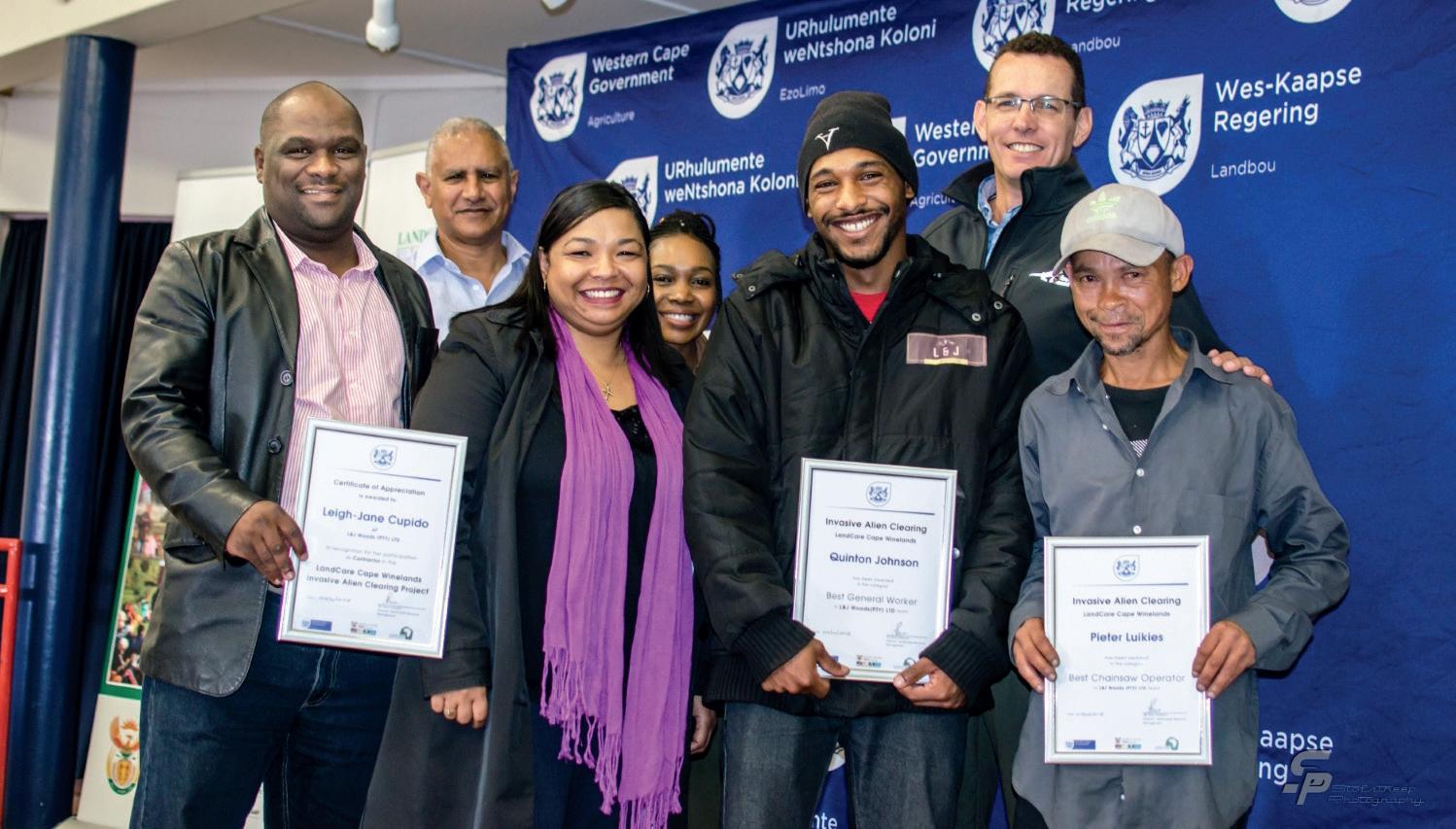
Ten einde waterskaarste en klimaatsverandering aan te spreek, word groot en belangrike werk gedoen om indringerplante (veral langs riviere) onder beheer te bring. Om erkenning te gee aan die mense wat onverpoosd agter die skerms werk om dit te maak gebeur, is ’n jaarafsluiting en erkenningsfunksie einde verlede jaar in Worcester vir kontrakteurs in die Uitgebreide Openbare Werkeprogram (UOWP) gehou. Dit was die eerste keer dat die geleentheid as ’n formele funksie aangebied is. Aangesien dit ’n vereiste van die UOWP is dat sekere reëls en regulasies aan werkers oorgedra moet word, het daar terselfdertyd ’n oriënteringsproses vir 2019 plaasgevind.
Die geleentheid is bygewoon deur LandCare-beamptes (provinsiaal en nasionaal), beamptes van Casidra en Breede-Gouritz Opvangsgebied Bestuursagentskap, en – die eregaste van die dag – die indringerbeheerkontrakteurs en -spanne. Die 12 spanne wat die dag bygewoon het (altesaam 156 mense) is afkomstig van die Kaapse Wynland Distrik (Wolseley, Tulbagh en Wellington).
Sewe projekte word deur die departement gefinansier, terwyl ander befonds word deur:
• die Departement van Omgewingsake en Ontwikkelingsbeplanning;
• die Breede-Gouritz Opvangsgebied Bestuursagentskap;
• die grondeienaars self;
• World Wildlife Fund;
• die Tafelbergfonds;
• Ceres Besigheidsinisiatief; en
• Witzenberg Munisipaliteit.
Die projekte word gekoördineer deur die “Upper Breede Collaborative Extension Group” (UBCEG) wat ’n netwerkplatform
is vir die verskillende vennote. Hulle kan saam beplanning doen, en sodoende hul begrotings gesamentlik aanwend om ’n gemeenskaplike doel te bereik.
Tydens die geleentheid het elke kontrakteur erkenning gekry vir sy/haar suksesvolle bydrae tot die program. In elke span (bestaande uit 13 werkers) is ook toekennings gemaak aan die beste algemene werker en beste kragsaagoperateur.
Volgens Shalene Nicholas (LandCare – Kaapse Wynland) is van die spanne al sedert 2012 op departementele projekte werksaam. Sommige van die spanne het al só uitgebrei dat daar byvoorbeeld uit een van die spanne drie addisionele spanne onstaan het. “Baie van die werkers kom uit moeilike agtergronde en vind menswaardigheid deur die werk wat hulle op hierdie projekte verrig,” sê Shalene trots.
Chris Meintjies (LandCare – Kaapse Wynland) sê die sukses van die projekte kan hoofsaaklik toegeskyf word “… aan die betrokkenheid van grondeienaars en die toegewydheid van die kontrakteurspanne.”
Tot dusver is sowat 85% van die boBreederivier (Ceres tot Worcester), ontbos van enige volwasse indringerbome. Deurlopende onderhoud word gedoen op areas wat skoongemaak is, maar dit sal etlike jare neem voor die persentasie besmette grond tot onder 5% daal. Groot dele in die Wolseley-area is reeds onder die 5%-teiken en die grondeienaar kan dus self die onderhoud hanteer. Eienaars kan van hul eie werkers gebruik maak, maar baie verkies om die bestaande kontrakteurs te gebruik wat die ervaring en toerusting het. Die departement, in samewerking met die Wolseley Waterverbruikersvereniging, staan eienaars by deur monitering en evaluering van hierdie areas. AP
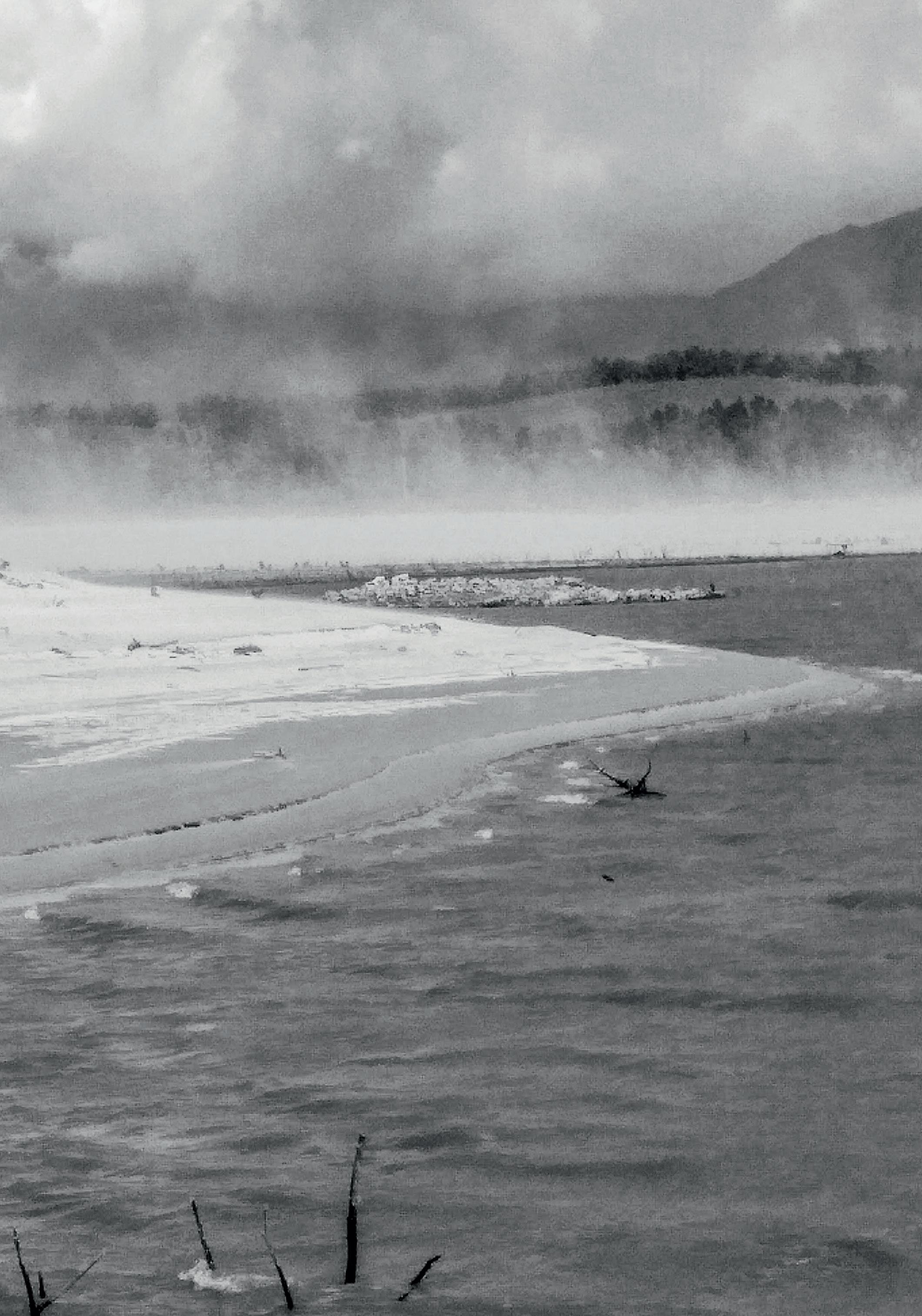
1 eLEAF, www.eleaf.com, ruben.goudriaan@eleaf.com, Wageningen, the Netherlands
2 Independent consultant, cjarmain@gmail.com
3 Western Cape Department of Agriculture, www.elsenburg.com, peterk@elsenburg.com
In the Western Cape of South Africa all eyes were focused on the taps during the 2017/18 summer. Dust storms could be seen clouding the sky above bare dams as shown in Figure 1. Three dry winters in a row caused dam levels to drop to record lows. At the end of October 2017 the average dam storage level in the Western Cape was approximately 39%;1 not enough by far to meet all domestic, industrial and agricultural water demands during the South African summer. As a result, firm measures were implemented to avoid potential disaster by:
• establishing new water sources;
• decreasing unproductive water losses (leakages); and
• introducing firm water restrictions.
The impact of the drought on irrigated agriculture during the 2017/18 season has been high. The total economic loss is estimated at ZAR 6 billion with 30 000 jobs lost in the agricultural sector.1,2
During the 2017/18 summer production season water restrictions of 50% were implemented in the Breede Valley, 60% in the Berg River and Riviersonderend region and various other regions, and 85% or more in the Lower Olifants River Valley.3 In response to the water limitations, crops in many areas were removed and shredded to produce mulch for fields that were kept in production. For orchards and vineyards, this approach will have a long-term impact on productivity as it will take a long time to replace the trees and vines that were removed. Where such extreme actions were not taken, an insufficient amount of water resulted in a reduction in yield quantity and quality. It is further expected that the absence of post-harvest irrigation will negatively impact production in the 2018/19 season.
For this article the impact of the 2017/18 drought on the Western Cape agricultural sector is assessed using satellite-based data products available via FruitLook
1 Informing the Western Cape agricultural sector on the 2015–2017 drought, A Drought Fact Sheet. Western Cape Department of Agriculture, November 2017.
2 https://www.dailymaverick.co.za/article/2018-04-23-western-cape-drought-impact-hard-long-term-andrequiring-tough-intervention/
3 http://www.wwf.org.za/water/?25441/Agricultural-water-file-Farming-for-a-drier-future
(www.fruitlook.co.za). The spatial FruitLook data is used to identify the impact of the drought in two distinct regions: the Groenland water management area and the Lower Olifants water management area. The Groenland area is relatively wet and indications are that the impact of the drought on production level was minimal during the 2017/18 season. The Lower Olifants area faced a water deficit of approximately 85% at the start of the season.4 The results from this analysis show the disastrous impact of a drought, but also how varied this impact can be in one single province.
Since 2011 farmers in the Western Cape have had access to satellite-based cropmonitoring information via FruitLook.
Complete funding by the Western Cape Department of Agriculture makes the use of FruitLook free of charge for the end user. By providing smart satellite-based data products, FruitLook assists in the efficient use of water resources by farmers. Between August 2017 and April 2018 over 750 users monitored more than 50 000 ha of agricultural land with the help of FruitLook.
Satellites can see more than the human eye; for example, near-infrared light, visible to insects but not humans, can be captured via modern sensors mounted on satellites. Via an ingenious combination of satellite data sources, weather information and smart models, data is created each week, describing crop growth, water consumption (actual evapotranspiration) and plant
1 The FruitLook programme is unique to the Western Cape in South Africa.
5 The number of water management areas covered by FruitLook. These include the Olifants-Doorn, Berg, Breede, Gouritz and Fish to Tsitsikamma regions.
9 FruitLook data sets describing crop growth, crop water usage and nitrogen content.
50 Open FruitLook training sessions provided at Elsenburg and in various regions in the Western Cape during FruitLook 2017/18.
63 Percentage of users who have indicated that FruitLook has made their water management at least 10% more efficient.
74 Percentage FruitLook users who are farmers. FruitLook is also used by consultants, scientists, students, and many others.
218 The number of raw satellite images processed to create the FruitLook data products for the 2017/18 season.
776 Number of users in 2017/18.
2011 The year FruitLook became available to farmers in the Western Cape. The data of earlier seasons is still available to users via the FruitLook website.
16 507 Fields ordered during 2017/18.
53 049 Hectares ordered during 2017/18.
85 000 The approximate number of fruit fields available for use on FruitLook.
200 000 The approximate number of fruit hectares available on FruitLook.
4 http://www.fruitnet.com/eurofruit/article/175645/olifants-river-asks-water-questions
nitrogen content. Through the FruitLook portal this data has been helping farmers to assess crop development and to take efficient and timely mitigation measures where needed, leading to an improved crop production process. In the context of water management, farmers can use FruitLook for assessing and comparing field water consumption, water shortages and crop stress, efficiency of water use, probe placement and the interpretation and detection of leakages.
Figure 2 shows biomass production for a table grape field as visible on the FruitLook web-portal. The image clearly displays in-field variation in growth. Variation in biomass production can be due to a myriad of reasons, including differences in soil or disease, fungi, or other problems within the crop production process. Figure 2 shows information for only one field; each pixel
represents an area of 20 m x 20 m. Analyses exceeding field scale can be done using the data set as well. The information behind the FruitLook portal is available for all major agricultural areas in the Western Cape, as can be seen in Figure 3.

FruitLook data was used to assess the effect of drought on production levels within the Groenland and Lower Olifants water management areas. The accumulated biomass production during the 2016/17 season is compared to the accumulated biomass production during the 2017/18 season, specifically for the months October to April, thereby covering the main fruit production season. By expressing the accumulated biomass for the 2017/18 season relative to the 2016/17 season, the impact of drought is shown as a percentage reduction of biomass production from 2016/17 to 2017/18.
Figure 2. Actual biomass production for a table grape field covering the period 21 to 27 February 2018, provided in kg/ha and offering a quantitative indicator of dry matter growth in a field. The biomass production includes roots, shoots, leaves, fruit and everything in-between.

Groenland is located in the south of the Western Cape, near Grabouw. Eikenhof is the main dam in the Groenland water management area. The water in this dam is primarily used for irrigated fruit farming. The Groenland Water User Association (WUA), allowing for a 10% curtailment, could adequately meet the water demand of their users. The major irrigated crop types in this region are pears and apples, with some wine grapes and stone fruit also present in the area.
When comparing the 2016/17 production season with the 2017/18 season, accumulated biomass production figures are similar. A comparison is made on a field-by-field basis for 4 302 fields covering close to 9 000 hectares. This comparison is visualised within the histogram for the Groenland area displayed in Figure 4.
The histogram shows a normal distribution and the average difference between 2016/17 and 2017/18 is almost zero. This means that for the two years considered in the
Groenland area, the number of fields that showed an increase in growth (biomass production) is similar to the number of fields showing a decrease in growth. For more than two thirds of all fields in the region, the difference in accumulated biomass production between the 2017/18 and 2016/17 season was less than 10%. It also indicates that the number of fields in production is relatively stable: almost as many fields show a sharp decrease in production as there are fields showing a sharp increase. According to the histogram this water management area suffered marginally, or not at all due to drought. It suggests that the area had adequate water for plant growth and the data shows that little water conservation measures were needed.
Figure 5 confirms this, showing the drought impact on a map, where vegetation growth in 2017/18 is expressed in relationship to 2016/17. Most fields show little drought impact (yellow), meaning production during 2017/18 is similar to 2016/17. The data suggests that some orchards were
Figure 4. Histogram showing impact on actual biomass production due to the effect of the 2017/18 drought in the Groenland water management area. No particular impact of drought is visible.

Figure 5. Map showing impact on actual biomass production due to the effect of the 2017/18 drought in the Groenland water management area. No particular impact of drought is visible on the biomass production figures. The dark red fields were probably removed over the past season. Similarly, the dark green fields are likely new in production.

taken out (in red), but also that new fields were planted or came into production (dark green). Although the data considered in this assessment shows vegetation growth (total biomass production) and not crop yield, it indicates a close-to-average production season compared to the year before.
A similar assessment for the Lower Olifants water users association (LORWUA) tells a completely different story. The LORWUA region is highly dependent on the Clanwilliam Dam, which feeds water through a system of canals to the water users downstream. In this area 90% of all irrigated fields are under wine and table grape cultivation. Table grapes are especially vulnerable to drought.
At the start of the 2017/18 season, the Clanwilliam Dam was filled to 40% of its capacity, causing the introduction of major water restrictions for irrigated crop
production. Under 20% of the normal water quota was made available to producers.
The data clearly shows the dramatic consequences of a severe drought. The histogram (Figure 6) displays the effect of the 2017/18 drought by comparing the biomass production figures to that from 2016/17. Close to 15 000 ha were analysed covering 5 027 fields. On average, nearly 25% less biomass was produced over the entire Lower Olifants water management area. This perceived drop in production is confirmed by the South African Wine Harvest Report 2018 from Vinpro. Low water availability from the Clanwilliam Dam led to reduced crop vigour, smaller canopies and increased water stress. 5 The number of fields showing a (close to) 100% reduction in growth – indicating the removal or complete termination of vineyards – is of great concern.

Figure 7. Map showing impact on actual biomass production due to the effect of the 2017/18 drought in the Lower Olifants water management area. A strong reduction in biomass production is visible for almost all production fields. Additionally, many fields show a (close to) 100% decline in growth, which means these fields are likely cleared.

Figure 7 maps this significant decrease in crop growth (biomass production) resulting from decreased water availability. It shows a section of the canal between Klawer and Vredendal. Almost all fields visible on the map show a drop in production. The fields coloured in deep red are likely cleared. Assuming a drop larger than 90% indicates permanent removal of the crop, based on the FruitLook data it is estimated that close to 200 fields were cleared over the course of the 2017/18 season. This accounts for nearly 5% of all vineyards and orchards in the region. At the same time almost no darker green fields are visible, meaning there were nearly no new plantings during the 2017/18 season. The histogram displayed in Figure 6 also highlights this; a significant part of the fields shows a 90% drop (or more) in biomass production, while almost no fields show a sharp growth increase between the two years.
Adding to the difficulties stated above,
there was no water available to producers for post-harvest irrigation. The impact of this still remains to be seen during the 2018/19 season. The combined effect of the decrease in productive area and the absence of post-harvest irrigation in this region, means that the 2017/18 drought will be felt for years to come.
Satellite-based data is extremely useful to assess the impact of droughts. This article shows just how effective it is. Although the causes, effects and predictions on the 2017/18 drought made headlines throughout the Western Cape, satellite imagery shows that the agricultural impact of the drought varied strongly between regions. In Groenland, sufficient water was available, enabling the farming community to run a relatively normal season. In stark contrast, farmers in the Lower Olifants region were watching the sky for rainfall that never came.
As the FruitLook data analysis shows, the farms in the Lower Olifants region were severely affected during the 2017/18 production season.
It underlines the vital importance of available water as the number one resource most essential to agricultural production. Climate models predict a gradual to rapid change in climatic conditions and an increased likelihood of extreme weather conditions like hail, flooding and prolonged droughts in the Western Cape. Agriculture, and wine and fruit production in particular, is vulnerable to this changing of the climate and additional stress from droughts on the already limited water supplies. In combination with significant non-climatic pressures – like increasing competition for water from the urban and industrial sector – climate change forms a potent threat to agricultural sustainability.
To live up to the challenges of the future, the agricultural sector needs to find ways to access more water, and at the same time irrigate more efficiently and with more precision. More water might be accessed
via expensive measures like the introduction of new dams, increasing the capacity of existing ones and increasing groundwater abstraction in order to reduce vulnerability to drought. Simultaneously, fresh water is ultimately a limited resource and the efficient use of water in irrigation is essential for a sustainable (agricultural) future. This is where tools like FruitLook can help, now and in the future.
Fortunately, the Clanwilliam Dam was completely refilled during the winter of 2018, making the future of agriculture in the Lower Olifants region a lot brighter than it seemed a few months ago. This is also true for most regions in the province where the water situation at the start of the 2018/19 production season was less dire than the previous year. This brings hope and the prospect of better times to come. At the same time areas like the Little Karoo and Central Karoo continue to face drought challenges. As such, the lessons learned from the past year(s) are vital. Water is life; use it wisely and responsibly.
FruitLook 2018/19 provides data from 1 August 2018 to 31 July 2019 and can be used for planning, monitoring and evaluating farming activities:
Planning: FruitLook data can be used to draw up water budgets and prioritise water allocations in terms of field water use efficiency.
Monitor: FruitLook data can assist with water management (how much water should be applied where and when), probe placement, selective sampling prior to and during harvesting, general problem detection through deviations in the spatial pictures and data trends, and in subscribing to FruitSupport.
Evaluate: FruitLook allows users to do a post-seasonal analysis, by relating crop yield to the FruitLook data, and analysing changes implemented.
Want to learn more? Hands-on training on FruitLook is offered for optimal use of this programme. Training sessions are presented at Elsenburg free of charge; visit the FruitLook website for more information.
www.fruitlook.co.za
info@fruitlook.co.za









Is a quarterly magazine, distributed to subscribers at no charge by the Western Cape Department of Agriculture.
Subscription
For free subscription to this quarterly magazine, please submit your details to Magrieta de Lange.
Tel: 021 808 7613
Email: magrietadl@elsenburg.com
Contact us
Western Cape Department of Agriculture
Tel: 021 808 5111
Email: info@elsenburg.com
Web: www.elsenburg.com
Printing Shumani Mills
Tel: 021 951 6391
Packaging
Stellenbosch Work Centre for Adults with Disabilities
Tel: 021 887 8688
Email: jjja@sun.ac.za
You can also read your copy online and subscribe at www.elsenburg.com/resource-library/agriprobe
Don’t forget to tune into RSG Landbou every Friday morning at 04:45 and on Saturdays at 11:45. Listen to the highly informative programmes on the Western Cape Department of Agriculture and the Agricultural Sector in general. If you miss it on the radio, you can also listen to the programmes of the week on www.elsenburg.com/resource-library/radio-elsenburg
Luister elke Vrydagmiddag om 12:45 na Die Kwik Styg op RSG waar kenners gesels oor klimaatsverandering.
1810-9799